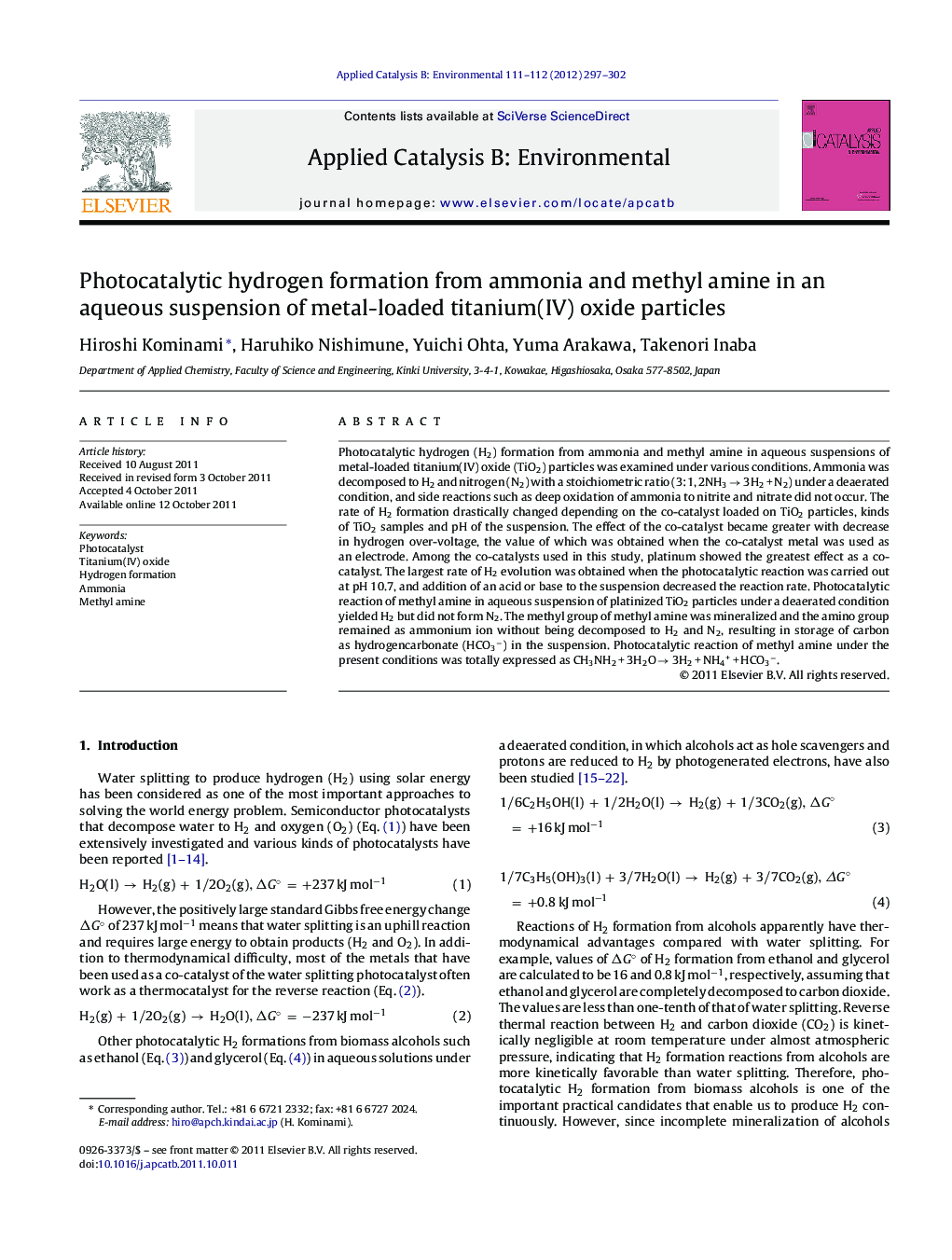| Article ID | Journal | Published Year | Pages | File Type |
|---|---|---|---|---|
| 46475 | Applied Catalysis B: Environmental | 2012 | 6 Pages |
Photocatalytic hydrogen (H2) formation from ammonia and methyl amine in aqueous suspensions of metal-loaded titanium(IV) oxide (TiO2) particles was examined under various conditions. Ammonia was decomposed to H2 and nitrogen (N2) with a stoichiometric ratio (3:1, 2NH3 → 3H2 + N2) under a deaerated condition, and side reactions such as deep oxidation of ammonia to nitrite and nitrate did not occur. The rate of H2 formation drastically changed depending on the co-catalyst loaded on TiO2 particles, kinds of TiO2 samples and pH of the suspension. The effect of the co-catalyst became greater with decrease in hydrogen over-voltage, the value of which was obtained when the co-catalyst metal was used as an electrode. Among the co-catalysts used in this study, platinum showed the greatest effect as a co-catalyst. The largest rate of H2 evolution was obtained when the photocatalytic reaction was carried out at pH 10.7, and addition of an acid or base to the suspension decreased the reaction rate. Photocatalytic reaction of methyl amine in aqueous suspension of platinized TiO2 particles under a deaerated condition yielded H2 but did not form N2. The methyl group of methyl amine was mineralized and the amino group remained as ammonium ion without being decomposed to H2 and N2, resulting in storage of carbon as hydrogencarbonate (HCO3−) in the suspension. Photocatalytic reaction of methyl amine under the present conditions was totally expressed as CH3NH2 + 3H2O → 3H2 + NH4+ + HCO3−.
Graphical abstractFigure optionsDownload full-size imageDownload as PowerPoint slideHighlights► Photoirradiation to NH3 in aqueous suspensions of metal-loaded TiO2 was examined. ► NH3 was photocatalytically decomposed to H2 and N2 with a stoichiometric ratio. ► Platinum showed the greatest effect as a co-catalyst. ► Reaction of methyl amine was expressed as CH3NH2 + 3H2O → 3H2 + NH4+ + HCO3−.
